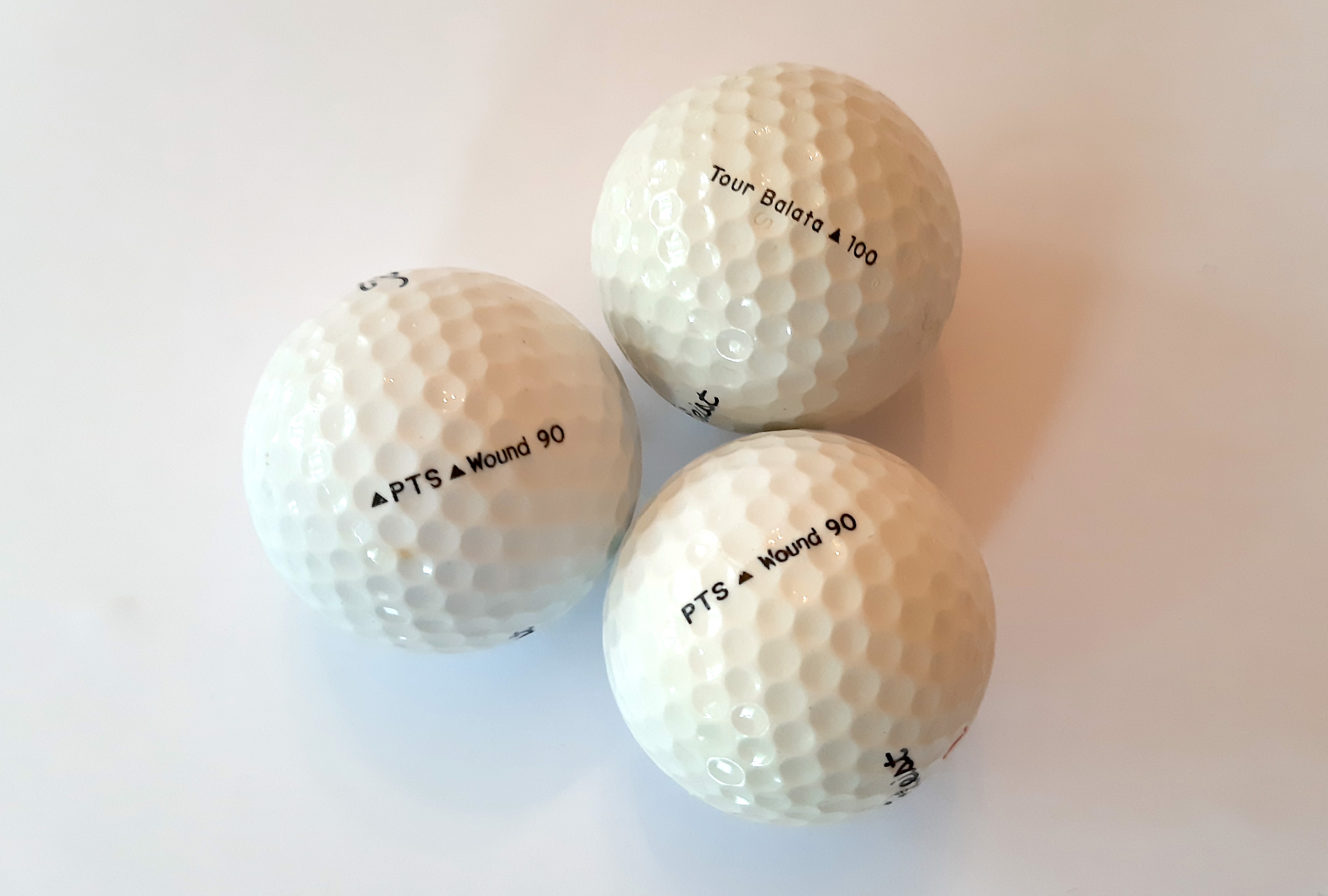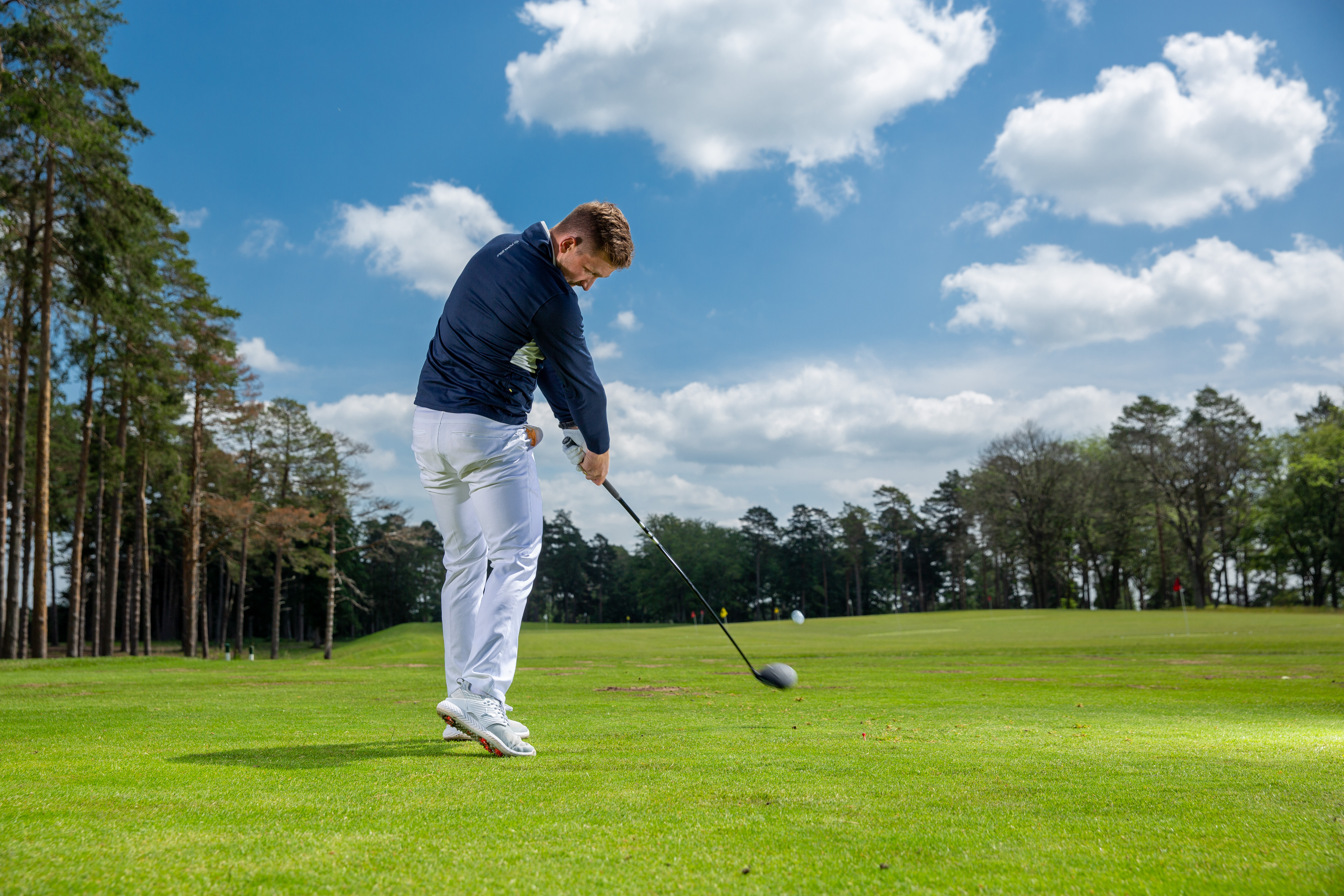Golf Ball Compression: What Is It And Why Does It Matter?
Even though golf ball manufacturers don't talk about compression as much as they once did, it's still an important consideration...


Golf Ball Compression: What Is It And Why Does It Matter?
Most balls in most sports compress (they deform or go mis-shapen) at the point of impact, whether football, rugby, tennis and, perhaps most obviously of all, squash, where even a young child can manipulate the ball easily in his or her hands. But even seemingly rock-hard balls such as snooker balls compress to a degree because impact in many sports can take place at perhaps surprisingly high speeds.

Club meets ball at speeds well in excess of 100mph in the strongest players
When it comes to golf, all balls feel hard to the touch (other than perhaps any tactile differences between their cover materials) and you would certainly be hard-pushed to compress them in your bare hands. But when you factor in that some of the best golfers in the world have driver swing speeds of over 120mph, and even the average male club golfer somewhere between 80 and 90mph, that’s an awful lot of collision force between two seemingly hard objects – golf ball and hard metal clubface.
Beneath the surface of a golf ball there always lies a core made of various plastic and/or rubber materials. There may be other layers between core and cover, especially in many of the best golf balls on the market, but it is the compound of the core that largely determines the extent to which the golf ball compresses at impact, and this in turn dictates the amount of energy transferred to the ball

The golf balls of yesteryear would sometimes have their compression stamped on them
In days gone by you will have seen a figure of perhaps 90 or 100 stamped on a golf ball to indicate its compression rating. Compression is a measure of the deflection a golf ball undergoes when it is struck, with values typically ranging from 50 to 100, although at least one version of Callaway’s Supersoft golf ball had a compression rating as low as 38.

2014's Callaway Supersoft model had a compression of just 38
These days, such figures are rarely, if ever, stamped on a ball, although some manufacturers will still refer to them somewhere in their product features and benefits. This is partly because ball manufacturing has advanced to such a degree, using all manner of high-tech, manmade materials, that it is possible to make balls that ‘feel’ significantly different to what their measured compression rating would actually be.
But even if the figures themselves are now largely absent, or certainly less prominent than once they were, compression is still an important factor in performance as some golfers will find it easier to get greater distance out of a ball they can compress more easily (a low-compression ball) than one that requires greater swing speed to reap maximum benefit from its construction (a high-compression ball).
Subscribe to the Golf Monthly newsletter to stay up to date with all the latest tour news, equipment news, reviews, head-to-heads and buyer’s guides from our team of experienced experts.

Swing speed is a big factor in deciding whether you'll be able to reap the full benefits of higher-compression balls
Many of the best golf balls for slow swing speeds and the best golf balls for seniors (acknowledging that there will, of course, be some seniors with faster swing speeds!) will be low-compression models because their cores can be ‘activated’ more easily at slower swing speeds allowing them to achieve greater distance. Conversely, low-compression balls will compress too much for those with faster swing speeds, meaning sub-optimal performance and most likely a loss of control.
While there are certainly elements of performance in the best premium golf balls from which all golfers can benefit (added feel, spin and control closer to the green) it may come at the cost of compromised distance for those not blessed with the fastest swings as they won’t be able to fully ‘activate’ the core of these higher-compression models at impact.

Srixon's new Z Star Diamond has a compression of 102 and is designed for driver swing speeds of 90+mph
As an example, Srixon launched two ball models in early 2022 – the new Z Star Diamond and a new Q-Star Tour model. The Z Star Diamond, as played by Brooks Koepka, has a compression rating of 102 and is designed for driver swing speeds of 90+mph; the Q-Star Tour has a compression rating of 72 and is designed for driver swing speeds of 75+mph, but is otherwise engineered for tour-level performance. In other words, it will be a better distance option for those with sub-tour swing speeds who still want to reap all the other performance benefits of a tour-calibre ball.
In addition to the relationship between ideal compression and swing speed, there is also a school of thought that some golfers might be able to hit low-compression balls a little further than firmer balls in cold weather, and some of our recommended best golf balls for cold weather are, indeed, low-compression models. Golf balls don’t go quite as far in the cold because the air is denser, which increases lift and drag so they tend to fly slightly higher and a little shorter. And if the golf ball itself gets very cold, this can also affect the characteristics of its materials resulting in lower initial velocity off the clubface.

Jeremy Ellwood has worked in the golf industry since 1993 and for Golf Monthly since 2002 when he started out as equipment editor. He is now a freelance journalist writing mainly for Golf Monthly. He is an expert on the Rules of Golf having qualified through an R&A course to become a golf referee. He is a senior panelist for Golf Monthly's Top 100 UK & Ireland Course Rankings and has played all of the Top 100 plus 91 of the Next 100, making him well-qualified when it comes to assessing and comparing our premier golf courses. He has now played 1,000 golf courses worldwide in 35 countries, from the humblest of nine-holers in the Scottish Highlands to the very grandest of international golf resorts. He reached the 1,000 mark on his 60th birthday in October 2023 on Vale do Lobo's Ocean course. Put him on a links course anywhere and he will be blissfully content.
Jezz can be contacted via Twitter - @JezzEllwoodGolf
Jeremy is currently playing...
Driver: Ping G425 LST 10.5˚ (draw setting), Mitsubishi Tensei AV Orange 55 S shaft
3 wood: Srixon ZX, EvenFlow Riptide 6.0 S 50g shaft
Hybrid: Ping G425 17˚, Mitsubishi Tensei CK Pro Orange 80 S shaft
Irons 3- to 8-iron: Ping i525, True Temper Dynamic Gold 105 R300 shafts
Irons 9-iron and PW: Honma TWorld TW747Vx, Nippon NS Pro regular shaft
Wedges: Ping Glide 4.0 50˚ and 54˚, 12˚ bounce, True Temper Dynamic Gold 105 R300 shafts
Putter: Kramski HPP 325
Ball: Any premium ball I can find in a charity shop or similar (or out on the course!)